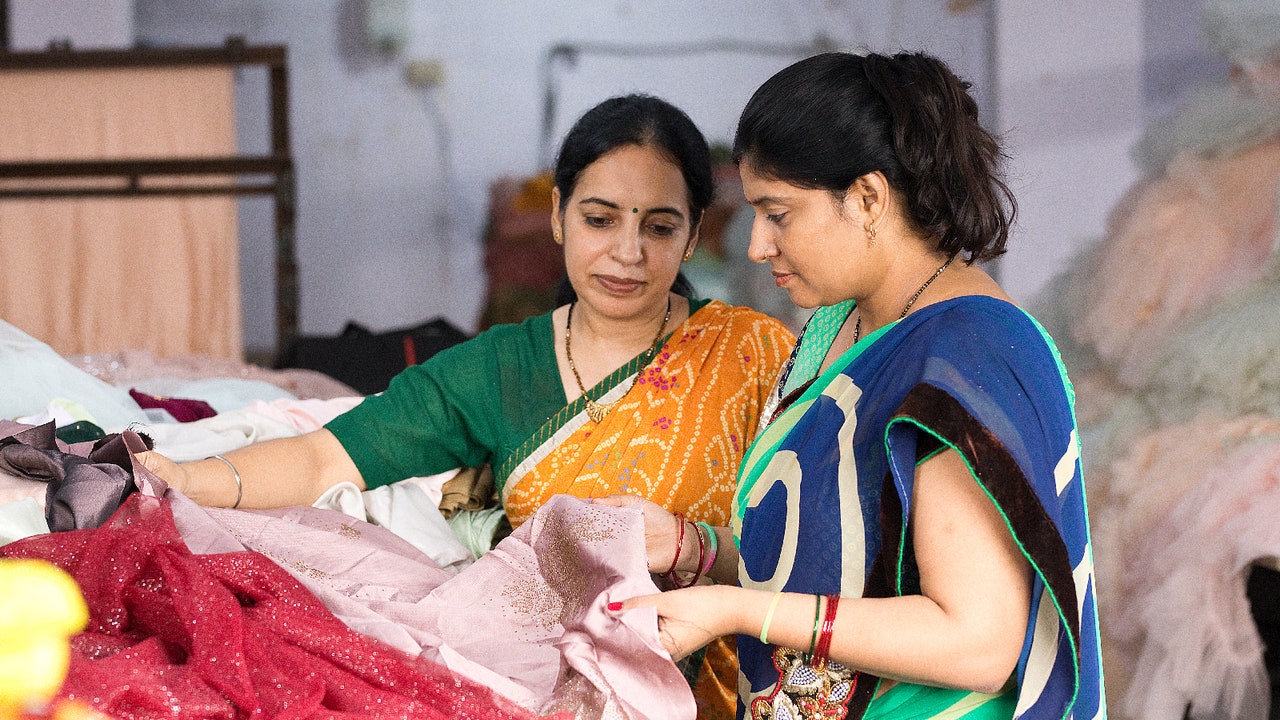[ad_1]
Transparency in the supply chain: Here’s what you should know about the topic
Transparency in the supply chain is an important building block towards the topic of holistic sustainability. But there are complex connections behind it. You can very simply imagine supply chains as communication changes. You organize a get-together where you ask everyone you invite to communicate this to the next person. What emerges at the end is pure chaos, with no one knowing exactly what the plan was. Because what was missing was Transparency, accountability and traceability. All things that we can transfer one-to-one to supply chains of garments and other products. So what we need to keep the perspective is Transparency in the supply chain. Madeleine Darya Alizadeh, founder of the sustainable label Dariadéh, who many know from her fashion blog and social media, knows that very well.
Instagram content
This content can also be viewed on the site it originates from.
In order to make this topic tangible in an exemplary way, she worked together with the Oeko-Tex seal (more precisely: the Oeko-Tex Made in Green standard) for two sweaters from the Dariadéh spring/summer collection 2023, in order to playfully communicate with a To educate product labels and to answer the question about “Who Made my clothes”. “Oeko-Tex Made in Green is a well-known and, above all, credible label that offers transparency. With the help of the label check, all information can be called up quickly and easily. The certification process also offers us the opportunity to take a closer look at our processes. Finding out what we are doing well, but also taking a close look where there is still room for improvement,” says the founder, who answered a few questions on the subject. In addition, we have summarized relevant information and tips on the subject of transparency in the supply chain for you below. Including a selection of labels that precede by way of example.
PR
What is transparency and why is it so important?
If you ask the Duden dictionary, then transparency means showing through, transparency, traceability or transparency. All things that suggest that you know where you stand. This is especially important when it comes to trust. Because when it comes to complex issues, you hope that the other person will not hide anything from you, but will communicate transparently. Madeleine thinks so too and advocates this principle: “Why should these topics (e.g. in the supply chain and manufacturing) be so opaque and difficult to understand? Why should consumers first do a doctoral thesis to find out where they can buy clothes that have not been produced at the expense of the environment, people and animals?” She takes a different approach to her own brand, based on being approachable and traceable. This is the only way that purchasing decisions can be made sensibly and progress can be achieved in the industry that is not only at the expense of individuals. “The main challenge is that everything that makes up a piece of clothing has to pass through a lot of hands beforehand. We know a lot: where the fabrics, buttons, threads and other components come from, but we don’t know, for example, in which field our organic cotton was grown. This is information that does not exist. And at the end of the day, unfortunately, you also have to trust,” says Madeleine, based on her own experiences.
What does all this have to do with the supply chain?
International guidelines regarding labour, environmental and social standards vary. This makes it difficult to ensure sustainable change when, for example, the minimum requirements or wages in two countries differ greatly. So far, this has led to many things being outsourced to places where wage levels are lower. To save costs, because capitalism is based on exactly these principles. However, values such as sustainability and the protection of people should not be disregarded at any point in the supply and production chain. Transparency is needed to ensure this. But above all brands, people, companies, initiatives and laws that guarantee exactly that. “In order to be able to make responsible purchasing decisions, consumers must be properly and comprehensively informed. Transparency is the only way to create appropriate clarity about ‘where’, ‘how’, ‘from what’ and ‘by whom’ clothes were made. At the same time, transparency increases trust in a brand and in oneself, which in the best case leads to a greater sense of responsibility,” explains Madeleine Alizadeh. The best example of how devastating the consequences of a lack of transparency can be is the building collapse of the textile factory in Rana Plaza in 2013.
[ad_2]
